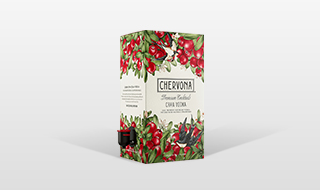 Tel: +86 188 2689 9458
Tel: +86 188 2689 9458
 Tel: +86 188 2689 9458
Tel: +86 188 2689 9458
source:other news release time:2023-07-14 Hits:

Everyone usually purchases all their daily items in grocery stores with similar homework or residence. It is a headache how to sell the daily necessities in wooden barrels, cloth bags, or wooden boxes to consumers when they are transported in bulk to the grocery store. The main principle and feature of non-woven fabric is that everyone can only go shopping with a basket or a cheap sweet summer cloth bag. At that time, the papermaking materials were still jute fiber and old summer cloth, with low quality and scarce quantity, which could not even meet the needs of newspaper printing. Friedrich Kohler, a German, invented wood pulp Papermaking, which greatly promoted the development of Pulp and paper industry and indirectly gave birth to the first commercial paper bag in the previous history.
When it comes to the top shopping bag in the box, Duvina believes that it should be a pre made bag that is cheap in capital and easy to use, and can handle at least 75 pounds of fabric. After repeated attempts, he locked the texture of the bag on Kraft paper, because it adopted conifers with longer wood fibers for pulping, and handled and punished the mild caustic soda and alkali sulfide chemicals through chemical influence during the cooking process. The main application limitations of environment-friendly non-woven cloth bags caused less damage to the original strength of wood fibers, so the ultimate paper was built with dense fibers and solid paper, Able to handle large tensile and pressure without breaking. Four years later, the top shopping bag was born in a box. It has a rectangular bottom and a larger capacity than traditional V-shaped bottom paper bags. A rope runs through its bottom and both sides to add its load-bearing capacity, and forms two pull rings at the top of the paper bag that are easy for the master to handle.
Read recommendations:
Custom Size Printed Coffee Milk Juice Wine Bib Bag-In-Box With Valve Gift Cardboard Box
pouch flexible packaging custom
What are the advantages of plastic packaging bags
PET food bag Production.Analyze the quality issues of food packaging bags
Popular recommendation
Pouch with handle
3L 5L Bag-In-Box Wine Dispenser Coffee/ Juice/ Water/ Oil Bag-In-Box With Valve
Custom Portable Reusable Drink Bags Stand Up Plastic Spout Pouches For Beverages Liquid Packaging
spout pouch bag Manufacturing
digital flexible packaging maker
bag in box packaging sales
zip lock bag for coffee Manufacturing
spout pouch machine Solution
spout pouch machine wholesale
Spout pouch Production
Why are water packaging bags not suitable for long-term storage?liquid spout bag
Composite packaging bag
What is the sealing length of the bag in box?
The difference between liquid bags and regular packaging bags
Food packaging bags have chemical hazards
A bag is a bag used to pack various articles
Type of bag
Coffee bags and coffee
The selection details of paper bag making are important
How long can cooked food vacuum packaging bags last?
Stable Development of Bag in Box Packaging.bag in box wholesale
The characteristics and performance of Spout POUCHES
What kind of development has degradable plastic bags brought to the packaging industry?
Food vacuum packaging bag customized why favor nylon composite film
Characteristics of ton bag aluminum foil bag.heat seal aluminum foil bag
reusable Snack food bag maker.Talking about the Safety Performance of Food Packaging Bags
The manufacturer tells you how to choose food vacuum bags.smart food snack bags wholesaler
The market volume of bag in bag water continues to grow.coffee bag with valve
If you don't know how to identify the vacuum packaging bag, come and see.zipper vacuum sealer bag su
What are the correct methods for using plastic packaging bags